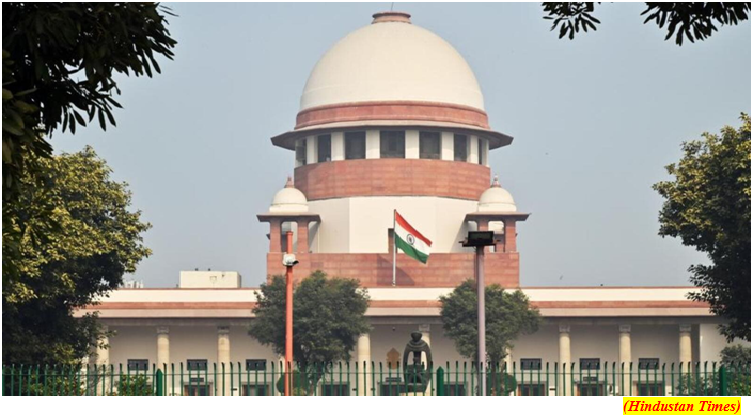Richest 1% of Indians now own 13 times more wealth than bottom half Oxfam (GS Paper 3, Economy)

Why in news?
- Recently, Oxfam India released a report titled, “Survival of the Richest: The India Supplement”.
- More than half of the wealth of the top 10 per cent of richest Indians is owned by the top 1 per cent.
Key Highlights:
- The richest one per cent of Indians own over 13 times more wealth than the bottom 50 per cent, according to a report by Oxfam India.
- The top five per cent own 61.7 per cent of the total wealth, nearly 20 times more than the 3 per cent owned by the bottom half.
- The share of the top 10 per cent in India's total wealth has risen from 45 per cent to 63 per cent between 1981 and 2012. On the other hand, the wealth of the bottom half halved during the same period.
Burden of the tax:
- The burden of the tax falls invariably high on the poor. The bottom 50 per cent income group spends a higher percentage of their income on indirect taxes than the middle 40 per cent and the top 10 per cent combined.
- The top 10 per cent spend the least percentage of their income on taxes among the three groups.Sixty-four per cent of all Goods and Services Tax (GST) collections come from the bottom 50 per cent and 4 per cent from the top 10 per cent.
- The bottom 50 per cent of the population pays six times more on indirect taxation than the top 10 per cent.
Inequality:
- Inequality has become worse since the onset of the Covid-19 pandemic.
- The top 5 per cent have continued to see their prosperity rise to owning around three-fifth of the total wealth in India (nearly 62 per cent), which is higher than the pre-pandemic years.
- While the country suffers from multiple crises like hunger, unemployment, inflation and health calamities, India's billionaires are doing extremely well for themselves. The poor meanwhile in India are unable to afford even basic necessities to survive.
- The number of hungry Indians increased to 350 million in 2022 from 190 million in 2018.
Way forward:
- Taxing the super-rich is the strategic precondition to reducing inequality and resuscitating democracy.
- It suggested a reduction in the GST slabs on essential commodities. The rates can be hiked for luxury goods. It also suggested raising taxes on capital gains, which are subject to lower tax rates than other forms of income.
- Additionally, the wealth of the top 1 per cent should be taxed on a "permanent basis" with higher rates for millionaires, multi-millionaires and billionaires.
- The Centre should ensure workers in the formal and informal sectors are paid basic minimum wages. The minimum wages should be at par with living wages which is essential to live a life with dignity.
India-China trade deficit crosses over $100 billion for the first time
(GS Paper 3, Economy)
Why in news?
- India’s trade deficit with China crossed for the first time a USD 100 billion mark.
- The trade deficit for India stood at USD 101.02 billion, surpassing the 2021 figure of US 69.38 billion.

Details:
- India’s total exports to China in 2022 was USD 17.48 billion, a year-on-year decline of 37.9 per cent. In 2021, India’s export stood at USD 28.1 billion.
- Meanwhile, there has India’s import from China in 2022 climbed to $118.5 billion, a year-on-year increase of 21 per cent from $97.5 billion in 2021.
India-China trade touches all-time high:
- The trade between India and China touched record high of USD 135.98 billion in 2022, overtaking the USD 125.6 billion mark in 2021.
- There has been an 8.4 per cent increase in trade between India and China in 2022.
- In 2021, India’s trade with China witnessed an increase of 43.32 per cent year-on-year, crossing USD 100 billion mark for the first time.
- The trade deficit in 2021, meanwhile, stood at USD 69.56 billion as India’s imports from China saw an increase of 46.14 per cent to reach USD 97.59 billion.
- Also, in 2021, India’s export to China increased by 34.28 per cent year-on-year to reach USD 28.03 billion.
Rapid expansion:
- Trade between India and China continued to increase despite border tensions following the military standoff in eastern Ladakh in May 2020.
- The rapid expansion of India-China bilateral trade since the beginning of this century has propelled China to emerge as India’s largest goods trading partner by 2008.
- Since the beginning of the last decade, bilateral trade between India and China recorded exponential growth. India-China bilateral trade grew by 75.30 per cent, an average yearly growth of 12.55 per cent.
China’s trade statistics:
- China’s trade surplus swelled to a record $877.6 billion in 2022 as exports rose despite weakening US and European demand and anti-virus controls that temporarily shut down Shanghai and other industrial centers.
- Exports increased 7 per cent from a year earlier to $3.95 trillion, decelerating from 2021′s explosive 29.9 per cent gain.
- Imports edged up 1.1 per cent to 2.7 trillion, cooling from the previous year’s 30.1 per cent rise as economic growth slowed and consumer spending weakened.
Case in Supreme Court: Can an underage Muslim girl marry after attaining puberty?
(GS Paper 2, Judiciary)
Why in news?
- Recently, the Supreme Court agreed to examine a decision of the Punjab and Haryana High Court holding that a Muslim girl can marry a person of her choice after attaining puberty.
- A bench headed by Chief Justice of India D Y Chandrachud said the HC’s decision should not be relied on as a precedent in any other case.
- In October 2021, another bench of the Supreme Court had agreed to hear an appeal on the case. The SC intervention opens up the issue of regulating the minimum age of marriage for women and the impact it has on personal law.

What is the Punjab and Haryana HC ruling?
- In October 2021, the Punjab and Haryana High Court while hearing a Habeas Corpus petition ruled that a Muslim girl is free to marry a person of her choice after attaining puberty, unless she is under the age of 18.
- A 26-year-old Muslim man who had married a 16-and-a-half-year-old girl had moved the High Court seeking custody of his spouse. The Punjab police had taken custody of the girl since she was a minor.
- The girl told the Panchkula magistrate in her statement under Section 164 of the Code of Criminal Procedure that she “had run away from her house along with the present petitioner out of her own will and has performed Nikah with the present petitioner in a Mosque.
- Under these circumstances, the HC allowed the marriage of the girl as per her free, especially since under Muslim law, a girl can be married after attaining puberty.
What is the Muslim law on the age of marriage for a woman?
- The HC ruling quoted the Principles of Mohammedan Law by Sir DinshahFardunjiMulla, on the capacity for marriage. It states:
Capacity for marriage:
- Every Mahomedan of sound mind, who has attained puberty, may enter into a contract of marriage.
- Lunatics and minors who have not attained puberty may be validly contracted in marriage by their respective guardians.
- A marriage of a Mahomedan who is of sound mind and has attained puberty, is void, if it is brought about without his consent.
What is the challenge?
- The National Commission for Protection of Child Rights had moved the Supreme Court against the HC ruling. Solicitor General Tushar Mehta, appearing for the child rights’ body, argued that the High Court’s ruling essentially allowed a child marriage, and this was in violation of the Prohibition of Child Marriage Act, 2006.
- The plea argued that the Child Marriage Act is a secular legislation and would apply to all religions, overriding their personal law.
What is the law on child marriage?
- Under the Prohibition of Child Marriage Act, 2006, any marriage below the prescribed age of 18 years for women and 21 for men is illegal, and the perpetrators of a forced child marriage can be punished. However, child marriages are illegal but not void.
- It is voidable at the option of the minor party. This means, the marriage can be declared void by a court only if the minor party petitions the court.
- The NCPCR also argued that since the Protection of Children from Sexual Offences Act, 2012 does not recognise consent for sexual activity by minors, marriages on attaining puberty cannot be allowed.
- In 2021, the Centre introduced a Bill to increase the age of marriage for women, and ensure harmony in the age limit across religions.
What is the proposed law?
- Union Minister for Women and Child Development SmritiIrani had introduced a Bill in the Lok Sabha to amend the Prohibition of Child Marriage Act, 2006 to increase the age of marriage for women, and ensure harmony in the age limit across religions. The Bill was subsequently referred to a Parliamentary Standing Committee.
- During the debate, the Indian Union Muslim League said the Bill was unconstitutional and was violative of Article 25 of the Constitution, which guarantees the freedom of conscience and free profession, practice and propagation of religion.




